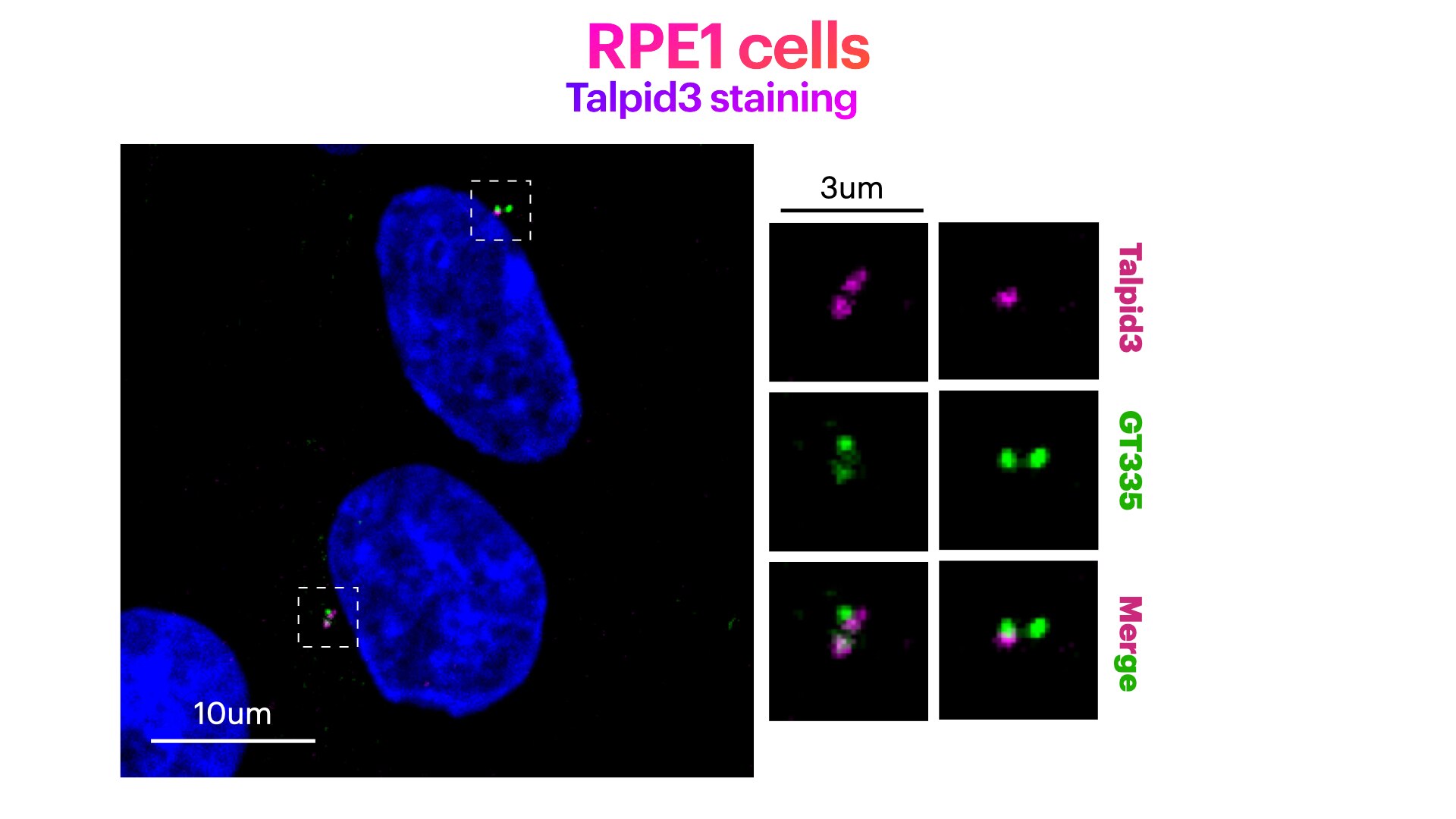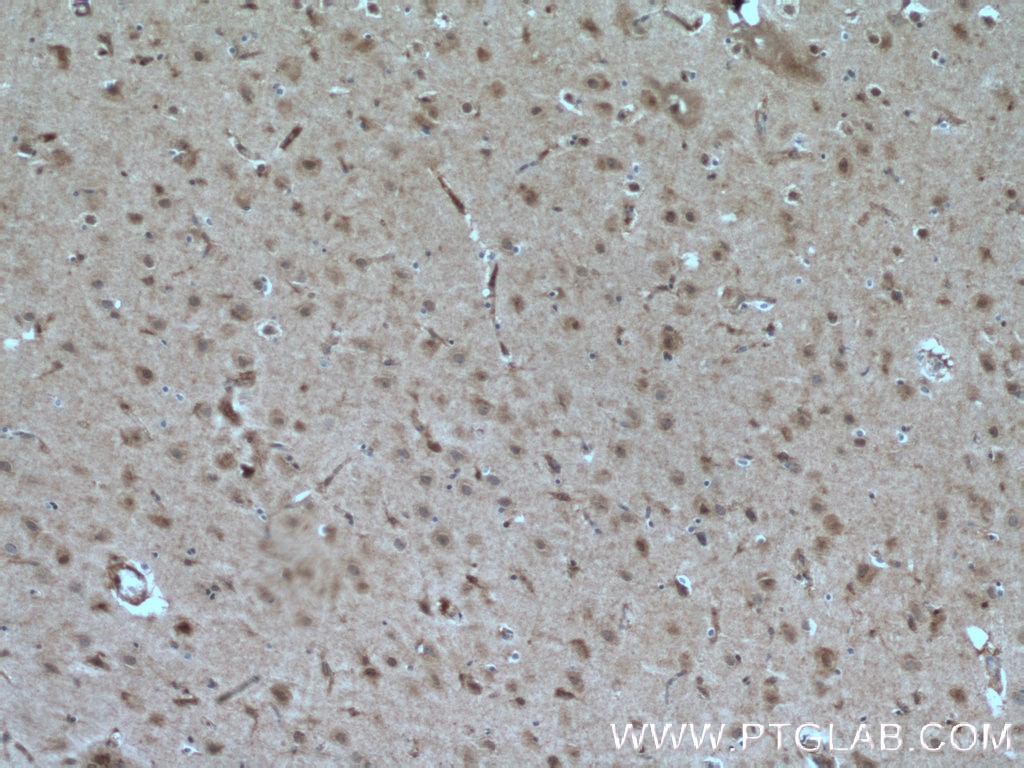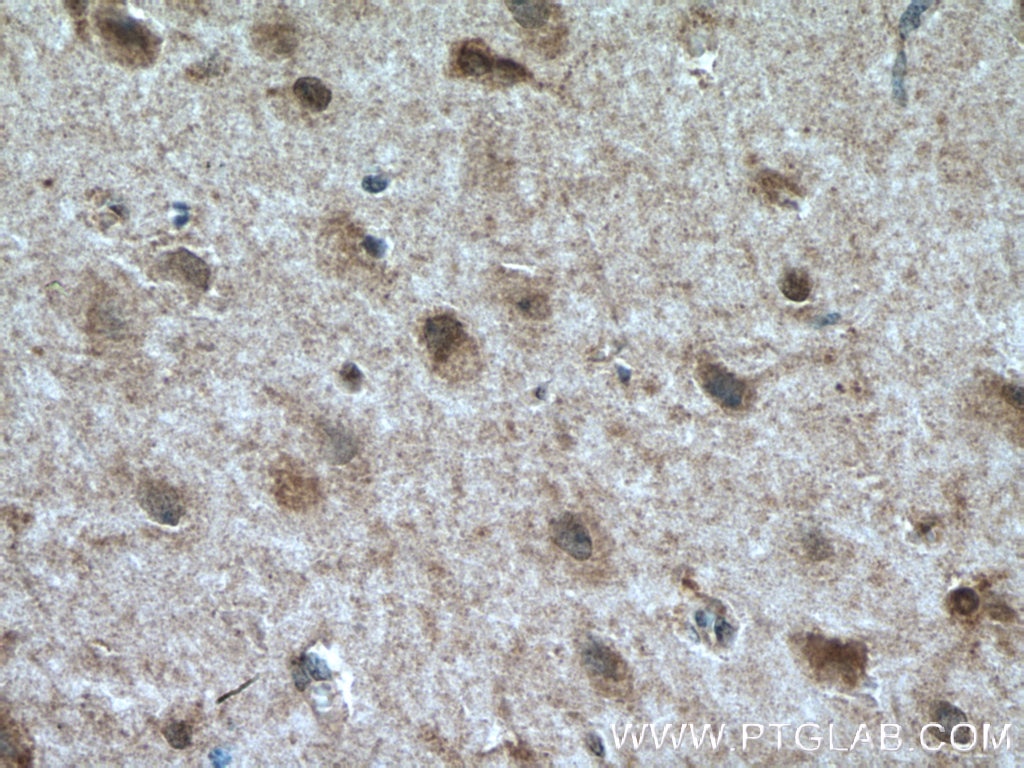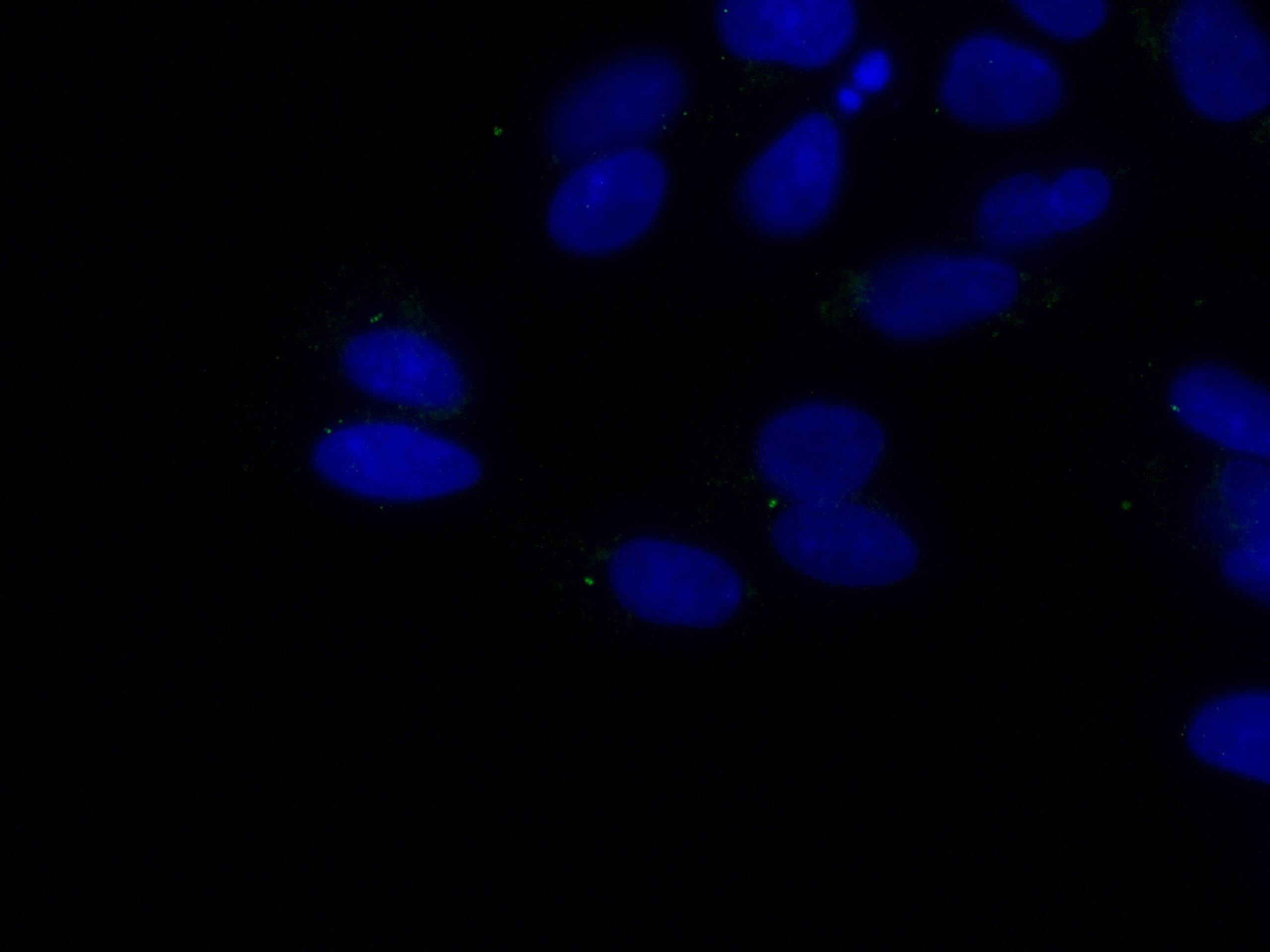- Featured Product
- KD/KO Validated
TALPID3 Polyklonaler Antikörper
TALPID3 Polyklonal Antikörper für IF, IHC, ELISA
Wirt / Isotyp
Kaninchen / IgG
Getestete Reaktivität
human, Hund, Maus und mehr (1)
Anwendung
WB, IHC, IF, CoIP, ELISA
Konjugation
Unkonjugiert
Kat-Nr. : 24421-1-AP
Synonyme
Galerie der Validierungsdaten
Geprüfte Anwendungen
| Erfolgreiche Detektion in IHC | humanes Hirngewebe Hinweis: Antigendemaskierung mit TE-Puffer pH 9,0 empfohlen. (*) Wahlweise kann die Antigendemaskierung auch mit Citratpuffer pH 6,0 erfolgen. |
| Erfolgreiche Detektion in IF | MDCK-Zellen |
Empfohlene Verdünnung
| Anwendung | Verdünnung |
|---|---|
| Immunhistochemie (IHC) | IHC : 1:50-1:500 |
| Immunfluoreszenz (IF) | IF : 1:1000-1:4000 |
| It is recommended that this reagent should be titrated in each testing system to obtain optimal results. | |
| Sample-dependent, check data in validation data gallery | |
Veröffentlichte Anwendungen
| KD/KO | See 3 publications below |
| WB | See 4 publications below |
| IF | See 6 publications below |
| CoIP | See 2 publications below |
Produktinformation
24421-1-AP bindet in WB, IHC, IF, CoIP, ELISA TALPID3 und zeigt Reaktivität mit human, Hund, Maus
| Getestete Reaktivität | human, Hund, Maus |
| In Publikationen genannte Reaktivität | human, Caenorhabditis elegans, Maus |
| Wirt / Isotyp | Kaninchen / IgG |
| Klonalität | Polyklonal |
| Typ | Antikörper |
| Immunogen | TALPID3 fusion protein Ag19813 |
| Vollständiger Name | KIAA0586 |
| Berechnetes Molekulargewicht | 1533 aa, 169 kDa |
| GenBank-Zugangsnummer | BC066647 |
| Gene symbol | KIAA0586 |
| Gene ID (NCBI) | 9786 |
| Konjugation | Unkonjugiert |
| Form | Liquid |
| Reinigungsmethode | Antigen-Affinitätsreinigung |
| Lagerungspuffer | PBS mit 0.02% Natriumazid und 50% Glycerin pH 7.3. |
| Lagerungsbedingungen | Bei -20°C lagern. Nach dem Versand ein Jahr lang stabil Aliquotieren ist bei -20oC Lagerung nicht notwendig. 20ul Größen enthalten 0,1% BSA. |
Hintergrundinformationen
KIAA0586 also named as Talpid3 is a 1472 amino-acid protein, which belongs to Talpid3 family. Talpid3 is a gene essential for vertebrate development. Studies in chicken, mouse, zebrafish and human have shown that TALPID3 is a centrosomal protein, mutants null for TALPID3 fail to produce cilia, resulting in far reaching signalling defects such as polydactyly, dorsalised neural tube, craniofacial and vascular defects often due to abnormalities in Hedgehog signal transduction. Talpid3 is absolutely required for the function of both Gli repressor and activator in the intracellular Hedgehog pathway and ciliogenesis. TALPID3 may be identified as a subcellular maker of centrosome and needed to further studied.
Protokolle
| Produktspezifische Protokolle | |
|---|---|
| IHC protocol for TALPID3 antibody 24421-1-AP | Protokoll herunterladen |
| IF protocol for TALPID3 antibody 24421-1-AP | Protokoll herunterladen |
| Standard-Protokolle | |
|---|---|
| Klicken Sie hier, um unsere Standardprotokolle anzuzeigen |
Publikationen
| Species | Application | Title |
|---|---|---|
Nat Commun TALPID3 and ANKRD26 selectively orchestrate FBF1 localization and cilia gating.
| ||
Elife TALPID3 controls centrosome and cell polarity and the human ortholog KIAA0586 is mutated in Joubert syndrome (JBTS23). | ||
EMBO Rep Aurora Kinase A proximity map reveals centriolar satellites as regulators of its ciliary function. | ||
Development Centrosomal protein CP110 controls maturation of mother centriole during cilia biogenesis. |
Rezensionen
The reviews below have been submitted by verified Proteintech customers who received an incentive forproviding their feedback.
FH Elisa (Verified Customer) (12-14-2022) | RPE1 cells were fixed in cold methanol for 10' at -20C. Cells were then rehydrated with PBS for 5'. Membrane permeabilization was then performed with 0.1% Triton + 0.1% Tween +0.01%SDS in PBS for 5'. Cells were finally incubated with blocking buffer (5% BSA+ 0.1% Tween in PBS) for 30' at RT. Primary antibody was diluted in blocking buffer 1:200 and incubated for 1h at room temperature. Alexa-488-Anti-rabbit was used as secondary antibody for Talpid3 (1:600 dilution) (1h at room temperature). In pink (Talpid3); in green (GT335, decorating centrioles) and in blue (Hoechst, DNA).
 |




